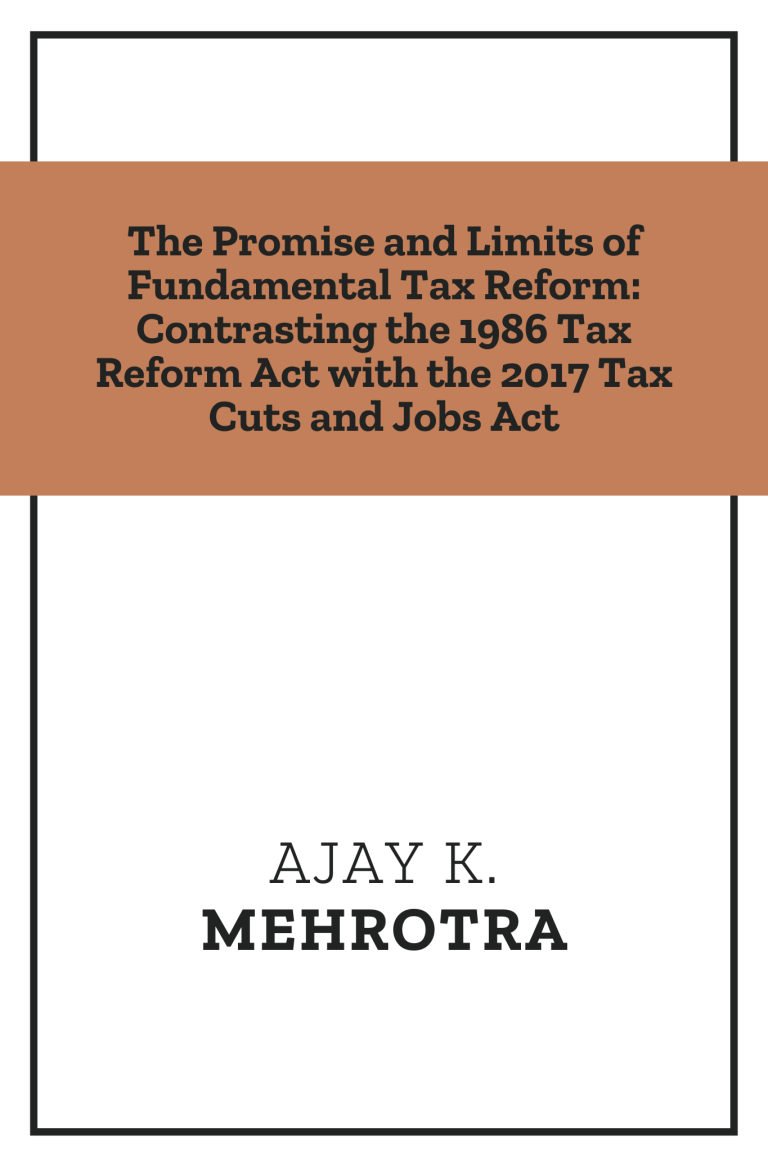From UC Davis Law Review
In December 2017, the Trump administration and its congressional allies enacted the Tax Cuts and Jobs Act, hailing it as the twenty-first century successor to the “landmark” Reagan-era Tax Reform Act of 1986. Indeed, the ’86 Act has long been celebrated by scholars and lawmakers alike as the apex of fundamental tax reform. The ’86 Act’s commitment to broadening the income tax base by eliminating numerous tax benefits and reducing marginal tax rates was seen in 1986 as the culmination of a nearly century-long intellectual movement toward conceptual tax reform.
While the ’86 Act may have been landmark legislation at its inception, it gradually unraveled over time. Within the course of the decade after the adoption of the ’86 Act, tax rates increased and many of the base-narrowing tax benefits were reinstated into the Internal Revenue Code. While the tax code did not return to its pre-1980s form, the ’86 Act did not live up to its initial acclaim. What appeared, at first blush, to be a hallmark accomplishment soon became an aspirational touchstone for future fiscal reformers — including 2017 lawmakers.
In light of this history, is the ’86 Act a reasonable and accurate point of comparison for the 2017 Act, as some commentators have proclaimed? If so, what were the broader circumstances that led to the origins and ultimate enactment of the ’86 Act? Does the earlier environment match the conditions that gave rise to the 2017 Act? If the two laws do share some similarities, what can we learn about the future of the 2017 Act by examining the gradual undoing of the ’86 Act? This Essay seeks to address these critical questions about the promise and limits of fundamental tax reform.

